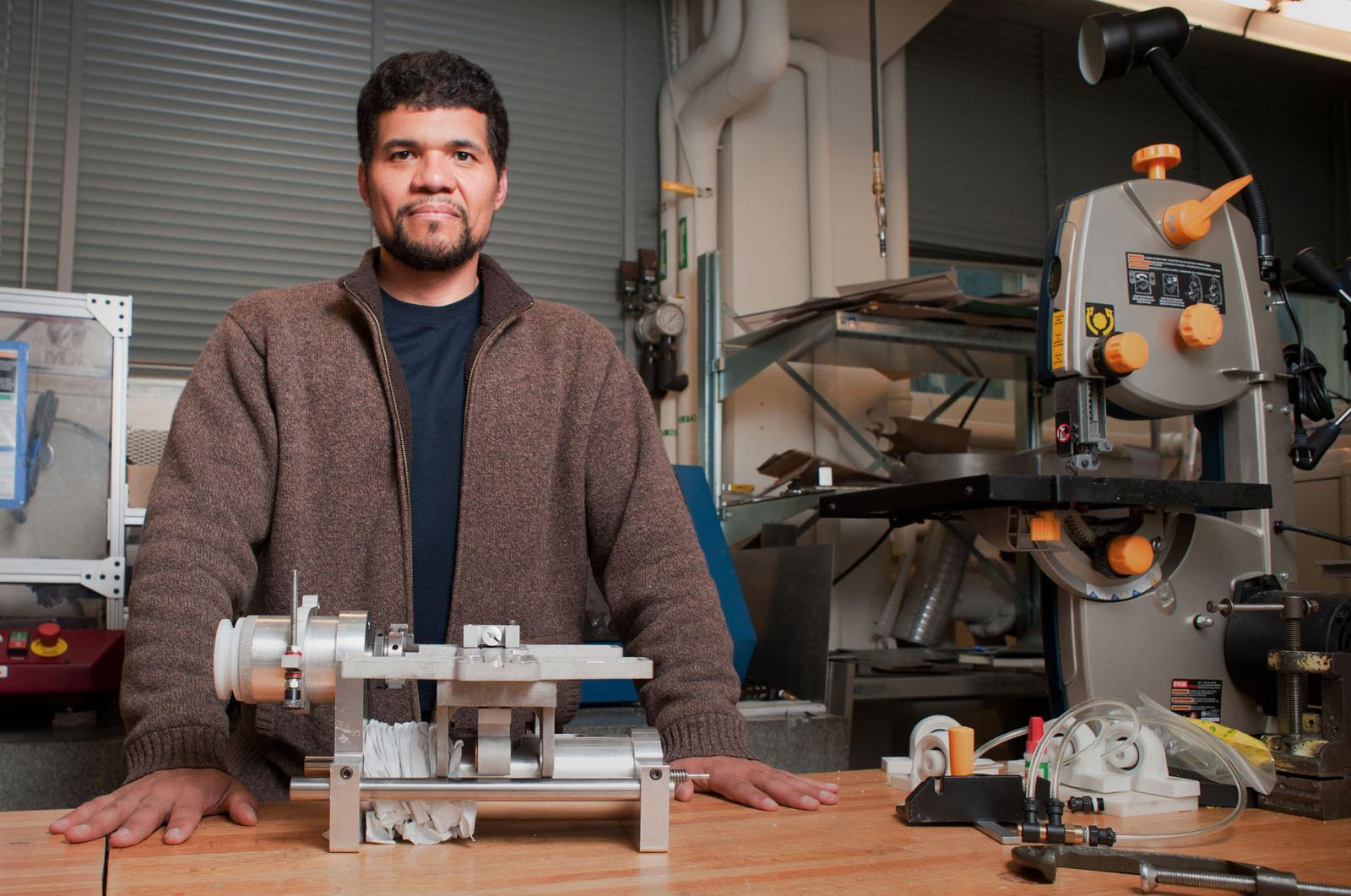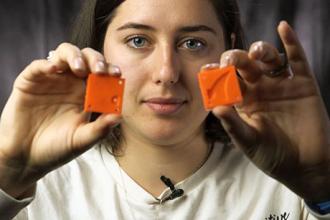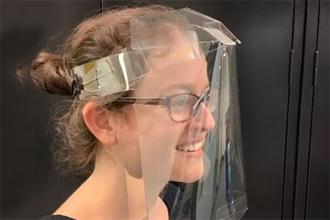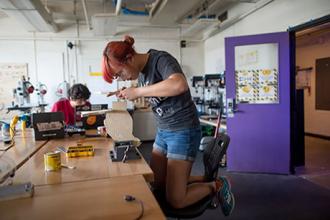
Professor
Martin Culpepper
Interests
- Design of precision machines and mechanisms
- Design of compliant mechanisms
- Mechanical system modeling and optimization
Professor Culpepper News + Media

Mind and Hand: The Magic of Making at MIT
The magic of making is told through the personal stories of MIT students, whose passion runs deep and from an early age.

MIT initiates mass manufacture of disposable face shields for Covid-19 response
A team from MIT led by Professor Martin Culpepper has designed disposable face shields that can be mass produced quickly to address hospitals’ needs nationwide.

Building a framework for remote making
A decision-making framework and wiki for students developed by Professor Martin Culpepper of MIT Project Manus and Tolga Durak of MIT Environment, Health and Safety enables safe making from home.
Faculty Details
Education
-
1995
IOWA STATE UNIVERSITY
B.Sc. -
1997
MASSACHUSETTS INSTITUTE OF TECHNOLOGY (MIT)
M.Sc. -
2000
MASSACHUSETTS INSTITUTE OF TECHNOLOGY (MIT)
Ph.D.
Research Interests
We (1) invent, design and fabricate high-performance machine systems; and (2) Generate design theory/tools/methods that enable the preceding. We produce new concepts that change the paradigm for specific machine technologies. We develop understanding of the fundamental issues that dominate/limit them, then create the knowledge/tools/theory/proof that engineers need to design/employ them. We apply this work to advanced machine technologies that:
-
Make (e.g. manufacturing, rapid prototyping, fixturing)
-
Move (e.g. robotics, motion stages, mechanisms), or
-
Measure (e.g. instrumentation, medical devices, telescopes)
Honors + Awards
-
MIT Serving Our Community Award
-
MIT Class of 1960 Fellow
-
ASME Kornell Ehmann Manufacturing Medal
-
Fellow of the ASME
-
Presidential Early Career Award for Scientists and Engineers
-
Ruth and Joel Spira Award for Distinguished Teaching
Memberships
2001 – Present Member, American Society of Mechanical Engineers
2000 – Present Member, American Society of Precision Engineers
2001 – Present Member, European Society of Precision Engineers
Professional Service
2020 – Present Editor; International Journal of Academic Makerspaces and Making
2021 - Present Member, Higher Education Makerspace Initiative
2018 – 2021 Chief Executive Officer; Higher Education Makerspace Initiative
2010 – 2011 Consultant; Tissue Vision [Design/fabrication of tissue slicing mechanisms]
2008 – 2009 Consultant; Tissue Vision [Design/fabrication of tissue slicing mechanisms]
2008 – 2010 Consultant; Boston Engineering [Design of Harvard's Atlum ultramicrotome]
MIT Service
2015 – 2022 Director, Project Manus; MIT
2013 – Present Full Professor; Department of Mechanical Engineering, MIT
2008 – 2013 Associate Professor (with tenure); Department of Mechanical Engineering, MIT
2004 – 2008 Associate Professor (without tenure); Department of Mechanical Engineering, MIT
2001 – 2004 Assistant Professor; Department of Mechanical Engineering, MIT
Teaching
Becoming a great designer/engineer means learning to meld invention, engineering common sense, engineering science, and hands-on fabrication/measurement skills to solve real problems. Every class taught by Prof. Culpepper is tuned to teach these skills:
Spring: 2.72/2.720 Elements of Mechanical Design
Advanced study of modeling, design, integration, and best practices for use of machine elements, such as bearings, bolts, belts, flexures, and gears. Modeling and analysis is based upon rigorous application of physics, mathematics, and core mechanical engineering principles, which are reinforced via laboratory experiences and a design project in which students model, design, fabricate, and characterize a mechanical system that is relevant to a real-world application.
Fall:2.145/2.147 Design of Compliant Mechanisms, Machines and Systems
Design, modeling and integration of compliance into systems that enable performance which is impractical to obtain via rigid mechanisms. Students learn multiple strategies (pseudo-rigid body modeling, topology synthesis, freedom and constraint topology) to engineer high-performance compliant mechanisms . Emphasis is placed upon the use of 1st principles to optimize kinematics, stiffness, power, load capacity, dynamics, efficiency and integration with actuation/sensing.